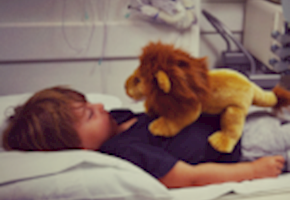Ehlers-Danlos Syndrome (EDS) is a group of hereditary disorders of the connective tissues that cause defects in one or more gene(s) that code for different types of collagen proteins. Collagen is responsible for providing strength and adhesion to the body’s tissues. There are different types of EDS; the most common type is the hypermobility type (EDS Type III) with a current expected prevalence of 1 in 1,000 births. EDS has no racial or sexual predisposition and has variable affects on the patient’s skin, joints, muscles, blood vessels and internal organs.
Because EDS is commonly associated with chronic progressive pain, hypermobile joints, hyper-elastic and/or smooth, velvety skin, easy bruising, and muscle hypotonia, EDSers (the term used to describe people born with EDS) are often written off with the diagnosis of growing pains and clumsiness during childhood. As EDSers age into their adolescent years, chronic dislocations and subluxations of the joints tend to be misdiagnosed as injuries acquired through sports, extracurricular activities, etc. Once EDSers settle into adulthood, a common misdiagnosis is arthritis and/or fibromyalgia. It is important to note that the symptoms of EDS can vary between different individuals and also within individuals in the same family.
Unfortunately, there are no current treatment options or a cure for EDS. Palliative care for the debilitating symptoms of EDS, along with physical therapy is currently the only option available to the EDS community. EDSers United Foundation (EUF) is focused on changing this. The entire team at EDSers United Foundation is focused on providing effective community support programs, raising awareness amongst the general population and the medical community, and working with the R&D industry to advance research for a possible cure. As we work towards utilizing current biotechnology and medical advancements to discover a cure for EDS, it is important that people born with EDS receive their diagnosis and actively maintain their muscle tone and strength and continuously monitor the stability of the internal organs and blood vessels in order to prevent spontaneous ruptures and prolong independent mobility. For many children this means skipping gym class at school and going to personalized physical therapy sessions instead in order to maintain their muscle tone and strength without risking injury to their fragile bodies.
Parents of children suspected to have a connective tissue disorder like EDS need to understand that their children will most likely never not experience pain. Chronic pain tends to be a part of the regular existence for those living with EDS. Some days will be more severe and less tolerable than others. On the more severe days, you will notice the child will become more irritable, fatigued, and less engaged in the tasks required of them, which can often be mistaken as behavioral problems. On the days where the pain is more tolerable, children with EDS may appear as if they are not experiencing any pain. Children EDSers have an innate desire to appear normal. They do not yet fully understand that chronic pain is not a part of the average person’s life and believe that everyone around them is also tolerating the same physical sensations. As a result, they will do their best to mimic other children, by running, dancing, actively playing, etc. whenever their pain levels are low enough for them to essentially be able to ignore it. To an observer, the child will often appear as if they are not experiencing any pain during these active times.
As the child ages and becomes more aware that not everyone experiences life as they do, they will begin to behave in one of two ways. Some children will begin to use the fact that they are different to their “advantage” in order to receive the attention they desire from the adults around them. These children tend to evolve into adult EDSers of whom struggle with depression, anxiety and often attempt suicide. The other children will begin to “downplay” their symptoms and only express them when the symptoms are severe and close to their threshold of intolerance. Many parents will begin to notice that their child may appear slightly uncomfortable, but the child insists that they are “fine.” This is a sign that the child is developing coping mechanisms for their condition and higher pain levels. These children tend to evolve into proactive adults who personally develop adjustments to accommodate for their physical limitations whenever needed. These adults tend to aspire to avoid disability by remaining active despite the pain of movement and become creative when it comes to making their daily life easier and more productive. These adults very rarely attempt suicide or fall prey to severe depression despite living with a chronic, debilitating and progressive condition.
Children with EDS also tend to experience very high levels of fatigue after daily activities. Poor motor function and musculoskeletal joint symptoms tend to interfere with daily life activities and typically results in a less-active lifestyle as well. This can cause the child to get caught in a vicious cycle encouraging more fatigue, low muscle tone and strength and stronger pain levels. Studies and case reports have indicated that physical therapy has a positive effect on children with EDS. Increased muscle strength can result in better stability of the joints, resulting in decreased pain levels. Therefore, parents who notice a high level of fatigue in their children with EDS will want to work with the school staff and faculty members in order to develop a routine that allows for the affected child to have enough energy to complete after school sessions of a personalized physical therapy regimen.
 For more information on Ehlers-Danlos Syndrome and what you can do to get involved in finding the cure, please visit the EDSers United Foundation’s website at www.EDSers.org.
For more information on Ehlers-Danlos Syndrome and what you can do to get involved in finding the cure, please visit the EDSers United Foundation’s website at www.EDSers.org.






Add A Comment
Thank you for your comment.
Sorry! There was a problem with your comment submission. Please try again.
Comment
Allowed HTML: <b>, <i>, <u>, <a>
Comments
Thank you for your comment.
Sorry! There was a problem with your comment submission. Please try again.
Thank you for your comment.
Sorry! There was a problem with your comment submission. Please try again.